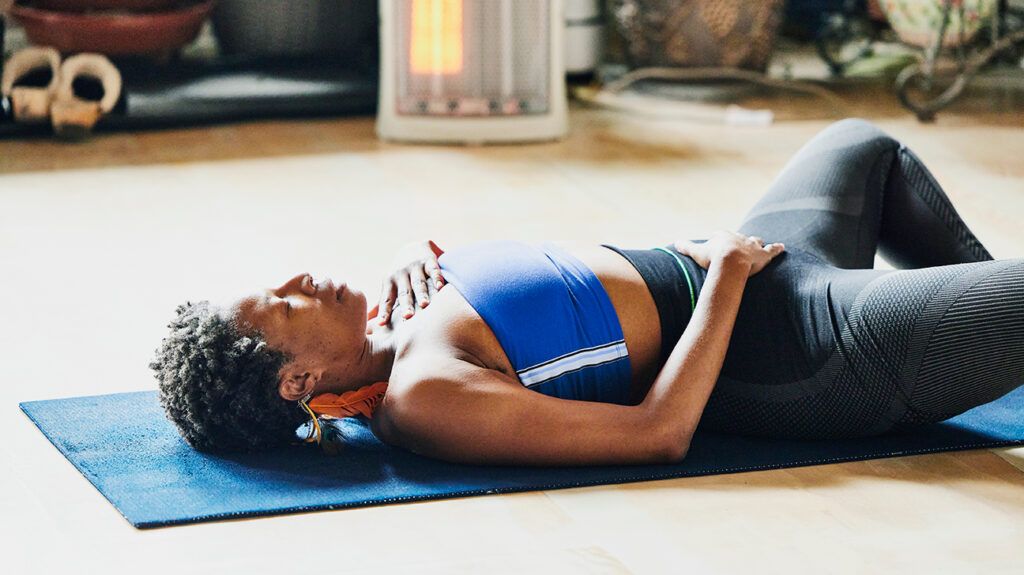Practicing yoga can be a powerful way to help yourself heal after loss.

Yoga is a mind-body practice of postures, breathwork, and flowing through (or holding) poses to activate both physical and mental well-being.
You can find yoga classes in person and online to support almost any life circumstance or interest, including:
There are even specialized classes and practices devoted to yoga for grief.
Grief yoga can help you deal with the physical and emotional effects of anguish, feel connection or closure with who or what’s lost, and more.
You don’t need yoga experience to try it. And you can practice grief yoga in a class setting or privately at home so you can do whatever feels best during your healing journey.
You may turn to yoga for support because it’s a safe space to move through the stages of grief. Yoga for grief and loss is often more focused on movements and breathing techniques that help you process your feelings.
This type of yoga practice is less about flexibility or balance but more about building awareness. Body scans in restorative yoga and mindfulness may help you find and release those areas of your body where you’re holding the pain from your loss.
People who practice or teach yoga for grief and loss often aim to create a compassionate space to allow participants to let go of their pain and open themselves up to new joy.
Beyond providing you an outlet to release grief, taking a yoga class specially designed for grief, loss, or healing can also connect you with other people who are dealing with similar feelings and situations.
Does grief affect the brain?
Grief is more than an emotional experience. It can affect the brain and other parts of the body. According to The American Brain Foundation, grief can cause changes in memory, behavior, sleep, and body function. It can also have cognitive effects, like brain fog.
- emotions
- memory
- controlling bodily functions
- self-regulation
The same review of research also shows that people with complicated grief have less brain volume than other folks. People with complicated grief show smaller white matter and gray matter areas than those unaffected by it.
Does yoga affect the brain?
Neuroscientists are only beginning to understand exactly how two big components of yoga — mindfulness and breathing — affect the brain.
A
- memory and learning
- emotional and behavioral self-regulation
- cognitive functions
The research also indicates yoga may reduce neurodegenerative decline.
Many yoga poses may help you cope with sadness and loss because of the focus on breathwork and restorative postures.
Child’s Pose
Practicing Child’s Pose (Balasana) can feel comforting, as if you’re retreating from something to the security of your being. It also opens up your lower back and tight hips (where many folks unknowingly carry stress).
- Kneel on your yoga mat or a thick towel with feet together and knees shoulder-width apart.
- Lower your upper body toward the floor so your forehead rests on your surface.
- Keep arms reaching in front of you.
- Hold the pose, focusing on inhaling and exhaling deeply and completely, to release tension.
Reclining Bound Angle Pose
Practicing Reclining Bound Angle Pose (Supta Baddha Konasana) can be grounding and is also a good hip-opener.
- Lie on your back with your chin tucked slightly.
- Draw soles of feet to meet, allowing knees to splay left and right toward the ground or upon yoga blocks.
- For added emotional support rest a hand over your heart and another on your belly as you breathe deeply.
Supported Bridge Pose
Practicing Bridge Pose (Setu Bandha Sarvangasana) is a restorative move that also strengthens the legs and back.
- Lie on a mat or towel with legs bent and feet on the floor.
- Gently push off your feet, lifting pelvis off the ground while keeping shoulders glued to the floor.
- You have the option of sliding a yoga block underneath your hips for support.
If you’re interested in trying yoga as a way to cope with grief and loss, there are several resources available online including:
- Griefyoga.com allows you to try a few yoga sessions and meditations for free at home to help you heal.
- Yogaforgriefsupport.com offers different online workshops. These include online support forums to connect you to other bereaved people, eight yoga videos, and four live webinars.
Yoga can be a useful tool to help anyone dealing with grief and loss.
Yoga benefits the brain in ways that may help offset some of the effects grief has on the brain.
Grief yoga is a bit different from other practices by focusing not as much on stretching or sweating but more on mindfulness and restorative movements and poses.
Leaning into the initial discomfort of some poses and experiencing meditative peace as your body relaxes into poses can be just the catharsis you might need during stages of grief.
